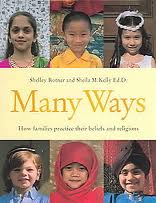Beliefnet bloggers were asked to contribute our memories of 9/11 for a collective piece called “Where were you on 9/11?” My piece can be found there, shortened to 200 words or less. Here’s the original.
On 9/11, I was a first grade teacher at a Jewish day school in Western Massachusetts . With no media devices other than a single radio, we learned of the events in fits and starts throughout the day. Our principal wisely decided that we would say nothing to the students that day, so that parents could have the first opportunity to frame the tragedy for their children. She also decided that we would start the next day of school with a prayer service.
September 11th fell during the Hebrew month of Elul, when it is a tradition to sound the shofar, an ancient wind instrument made from a ram’s horn. While I had heard the shofar blown hundreds of times in my life, September 12, 2011 was the first time I truly understood its meaning.
The shofar recalls moments of immense joy in Jewish history – receiving the Torah on Mt Sinai and the welcoming of the new year, Rosh Hashanah. It also evokes times of unspeakable grief – the destruction of the Holy Temple in Jerusalem , and the day Abraham was called to sacrifice his only son. The ram’s horn reminds us of God’s strength, and the tears of our people. It symbolizes the prophetic call for justice, and the promise of a messianic age. It urges us to repent, and it exhorts us to have faith.
There were no words to explain to our children what had happened. Fortunately, as a Jewish school, we had another way to communicate on 9/12. With the sounding of the shofar, we took our place amongst generations of ancestors who had witnessed unspeakable horrors in their own times and kept on going. After the service, our students went back to their math lessons and handwriting practice, their lunch boxes and rest mats, games of four square and jump rope, and life went on – quiet proclamations of incredible faith.

